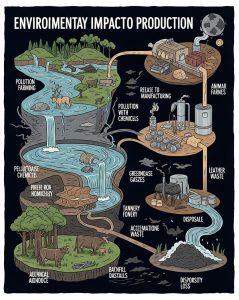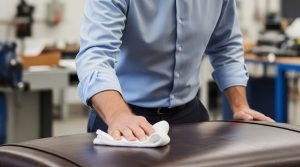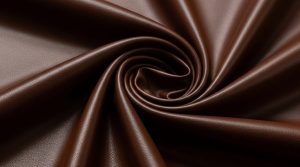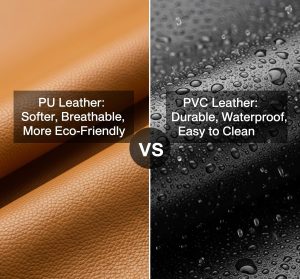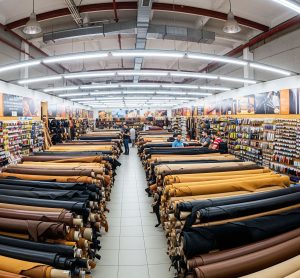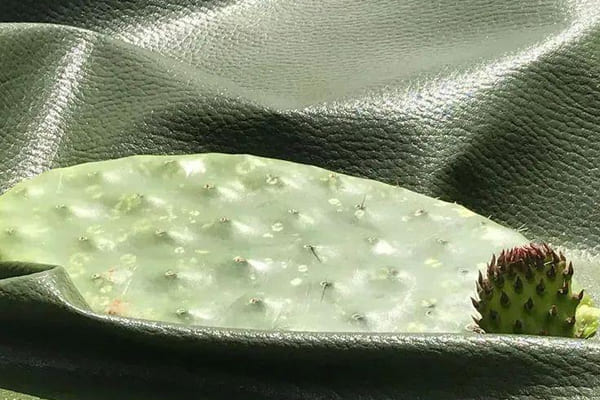
Leather—it’s luxurious, durable, and makes you feel like a fashion icon. But here’s the real question: what happens when that beloved leather bag of yours has seen better days? Does it graciously fade into the earth, or stubbornly stick around like an old shoe in your closet? Enter biodegradable leather, the eco-friendly hero we’ve been waiting for! Unlike traditional leather, which can take ages (and some toxic chemicals) to break down, biodegradable leather is here to save the planet, one fashionable step at a time. From mushrooms to pineapples (yes, really!), the future of leather is looking greener—and cooler—than ever. Let’s take a closer look at how leather is getting a sustainable makeover!
Breaking Down Biodegradable Leather: What Sets It Apart?
Biodegradable leather stands out from traditional leather due to its ability to break down naturally over time without causing environmental harm. Unlike conventional leather, which is often treated with chemicals like chromium to enhance durability but hinders decomposition, biodegradable leather is processed using eco-friendly methods. Vegetable tanning, for example, relies on natural substances like tree bark and leaves, making it much more sustainable. This leather avoids harmful chemicals, ensuring that once discarded, it can return to the earth without releasing toxins. Its distinguishing feature is not just the materials used, but the entire lifecycle, from production to disposal, which minimizes its environmental footprint.
From Nature to Fashion: The Rise of Biodegradable Leather
As sustainability becomes a priority in the fashion industry, biodegradable leather has emerged as a popular alternative to traditional, chemically-treated leather. Brands are increasingly looking for ways to merge eco-consciousness with style, and biodegradable leather fits the bill. Innovations in this field include not only vegetable-tanned leather but also exciting new materials like mushroom leather (mycelium) and fruit-based leathers from pineapple or apple peels. These alternatives are not only renewable and biodegradable but also require fewer resources, like water and energy, to produce. This shift is making eco-friendly leather products more accessible, appealing to consumers who are seeking fashion that aligns with their environmental values.
Eco-Friendly Leather: How Does It Really Biodegrade?
The biodegradation process of leather depends on the material’s exposure to elements such as moisture, bacteria, and oxygen. For biodegradable leather, particularly those made with plant-based tannins or bio-materials, this process can take anywhere from a few months to several years, depending on environmental conditions. Unlike synthetic leathers, which often contain plastic and remain in landfills for centuries, biodegradable leather slowly breaks down into natural components that re-enter the ecosystem. The absence of harmful chemicals ensures that no toxins are leached into the soil or water during this process. As a result, eco-friendly leather not only reduces waste but also aligns with nature’s natural cycle of renewal.
Leather Reinvented: The Science Behind Biodegradable Alternatives
Biodegradable leather alternatives have reinvented traditional leather by focusing on eco-friendly innovations that reduce the environmental impact. At the heart of this shift is the science of material engineering, where researchers explore new ways to create leather-like products that decompose naturally. Mushroom leather, derived from mycelium (the root structure of fungi), is one of the leading biodegradable alternatives. This leather-like material mimics the texture and durability of traditional leather but is fully biodegradable within months. Similarly, pineapple leather (Piñatex) and apple leather use leftover agricultural waste to create sustainable, cruelty-free materials. These biodegradable alternatives are produced with fewer toxic chemicals and minimal water usage, making them more sustainable from both an ecological and ethical standpoint.
The Future of Fashion: Can Leather Be Truly Biodegradable?
As consumers and brands alike turn toward sustainability, the fashion industry is rethinking its approach to leather. But the question remains: can leather be truly biodegradable and still maintain the qualities we love—durability, flexibility, and aesthetic appeal? The answer lies in ongoing innovations. Vegetable-tanned leather, for instance, is already a more sustainable option, breaking down faster than its chrome-tanned counterpart. However, fully biodegradable alternatives, such as lab-grown leather and plant-based options, offer even greater potential. These materials can decompose without leaving behind harmful microplastics or chemicals, aligning with the industry’s growing demand for circularity. As technology advances, the future of biodegradable leather looks promising, with the potential to revolutionize fashion by balancing style with sustainability.
From Animal Hides to Plant-Based: Exploring Biodegradable Leather Options
The transition from animal hides to plant-based materials is reshaping the way we think about leather. Traditional leather, made from animal hides, undergoes extensive chemical treatment that hinders its biodegradability. By contrast, plant-based leathers like mushroom leather, Piñatex (pineapple fiber), and apple leather present innovative, sustainable alternatives. These materials not only reduce the reliance on animal products but also offer a significantly smaller environmental footprint. Mushroom leather, for example, can be grown in just a few weeks and is fully compostable, while fruit-based leathers use waste from food production, making them highly resource-efficient. By exploring these plant-based options, the fashion industry can reduce waste, cut down on harmful chemicals, and contribute to a more sustainable future for leather goods.
Conclusion: A Greener Future in Leather, One Step at a Time
The world of leather is undergoing a transformation, trading in its old toxic tricks for eco-friendly alternatives that don’t just look good but also do good. From traditional vegetable tanning to futuristic mushroom and pineapple leathers, the push for biodegradable options is gaining momentum. As innovation continues, we may soon live in a world where your leather jacket won’t outlast your grandchildren! The future of fashion is about balancing durability and sustainability, and biodegradable leather is leading the charge. So, when it comes to your next leather purchase, why not go green and let your style decompose in the best possible way?



